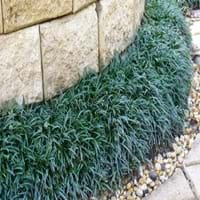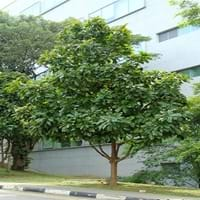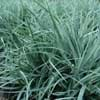Life Span
Perennial
Perennial
Origin
Japan
Southeastern Asia, India, China
Types
Not Available
Not Available
Habitat
Damp shady woods, foothill woods, Lowland
Subtropical forests, Tropical Forests
USDA Hardiness Zone
6-11
10-15
Sunset Zone
H1, H2, 5, 6, 7, 8, 9, 14, 15, 16, 17, 18, 19, 20, 21, 22, 23, 24
H1, H2, 24
Habit
Clump-Forming
Spreading
Flower Color
White, Lavender
Ivory
Flower Color Modifier
Bicolor
Bicolor
Fruit Color
Indigo, Dark Blue, Black
Green, Yellow green, Brown
Leaf Color in Spring
Dark Green
Dark Green
Leaf Color in Summer
Dark Green
Dark Green
Leaf Color in Fall
Dark Green
Dark Green
Leaf Color in Winter
Light Green
Dark Green
Leaf Shape
Grass like
Oblong or Lanceolate
Plant Season
Spring, Summer, Fall, Winter
Spring, Summer, Fall, Winter
Sunlight
Full Sun, Partial Sun, Partial shade
Full Sun, Partial Sun
Growth Rate
Medium
Medium
Type of Soil
Loam
Loam, Sand
The pH of Soil
Acidic, Neutral
Acidic, Neutral
Soil Drainage
Well drained
Average
Bloom Time
Late Spring, Early Summer, Summer
Early Summer, Summer, Late Summer
Tolerances
Drought
Not Available
Where to Plant?
Ground
Ground
How to Plant?
Root Division
Cuttings, Seedlings
Plant Maintenance
Medium
Medium
Watering Requirements
Regular watering during dry periods
Average Water Needs
In Summer
Lots of watering
Lots of watering
In Spring
Moderate
Moderate
In Winter
Average Water
Average Water
Soil pH
Acidic, Neutral
Acidic, Neutral
Soil Type
Loam
Loam, Sand
Soil Drainage Capacity
Well drained
Average
Sun Exposure
Full Sun, Partial Sun, Partial shade
Full Sun, Partial Sun
Pruning
Remove damaged leaves, Remove dead branches, Remove dead leaves
Remove dead branches
Fertilizers
All-Purpose Liquid Fertilizer
Put diluted fertilizers
Pests and Diseases
Not Available
Chlorosis, Susceptible to insect pests and moulds
Plant Tolerance
Drought
Drought
Flower Petal Number
Single
Single
Foliage Texture
Medium
Coarse
Foliage Sheen
Glossy
Glossy
Attracts
Hummingbirds
Not Available
Allergy
Asthma
no allergic reactions
Aesthetic Uses
Borders
Showy Purposes
Beauty Benefits
Not Available
Not Available
Environmental Uses
Air purification
Air purification
Medicinal Uses
Antipyretic, Antiscrophulatic, Antitussive, Aphrodisiac
Antibacterial, Antidiabetic, Antifungal, antimicrobial, Astringent, Expectorant
Part of Plant Used
Root
Bark, Fruits, Leaves
Other Uses
useful as a ground cover
Jam, Jelly, used in Indian cuisine in curries
Used As Indoor Plant
No
No
Used As Outdoor Plant
Yes
Yes
Garden Design
Container, Edging, Groundcover, Mixed Border, Rock Garden, Wall
Edible, Feature Plant, Fruit / Fruit Tree, Shade Trees, Tropical
Botanical Name
OPHIOPOGON japonicus
DILLENIA indica
Common Name
Mondo grass, lily turf, snakebeard
Chulta, Elephant Apple
In Hindi
Mondo Grass
Elephant Apple
In German
Mondo Grass
Elefant von Apple
In French
Mondo Grass
Elephant d'Apple
In Spanish
Ophiopogon planiscapus
El elefante de Apple
In Greek
Mondo Grass
ελέφαντας της Apple
In Portuguese
Mondo Grass
Elefante da Apple
In Polish
Mondo Grass
Słoń Jabłko
In Latin
Mondo Grass
Elephant Apple
Phylum
Embryophyta
Magnoliophyta
Class
Liliopsida
Magnoliopsida
Order
Liliales
Dilleniales
Family
Liliaceae
Dilleniaceae
Genus
Ophiopogon
Dillenia
Clade
Angiosperms, Monocots
Angiosperms, Core eudicots, Eudicots
Tribe
Not Available
Not Available
Subfamily
Not Available
Not Available
Number of Species
Not Available
Not Available
Difference Between Mondo Grass and Elephant Apple
If you are confused whether Mondo Grass or Elephant Apple are same, here are some features about those plants to help you choose better. Many people think that these two plants have the same characteristics, but one can see Mondo Grass and Elephant Apple Information and learn more about it. Fertilizers required for proper growth of Mondo Grass are All-Purpose Liquid Fertilizer, whereas for Elephant Apple fertilizers required are Put diluted fertilizers. Hence, one should know the basic difference between Mondo Grass and Elephant Apple if you are planning to have them in your garden to enhance its beauty.
<
Flowering PlantsImportance of Mondo Grass and Elephant Apple
Want to have the most appropriate plant for your garden? You might want to know the importance of Mondo Grass and Elephant Apple. Basically, these two plants vary in many aspects. Compare Mondo Grass and Elephant Apple as they differ in many characteristics such as their life, care, benefits, facts, etc. Every gardener must at least have the slightest clue about the plants he wants to plant in his garden. Compare their benefits, which differ in many ways like facts and uses. The medicinal use of Mondo Grass is Antipyretic, Antiscrophulatic, Antitussive and Aphrodisiac whereas of Elephant Apple is Antibacterial, Antidiabetic, Antifungal, antimicrobial, Astringent and Expectorant. Mondo Grass has beauty benefits as follows: Not Available while Elephant Apple has beauty benefits as follows: Not Available.
Compare Facts of Mondo Grass vs Elephant Apple
How to choose the best garden plant for your garden depending upon its facts? Here garden plant comparison will help you to solve this query. Compare the facts of Mondo Grass vs Elephant Apple and know which one to choose. As garden plants have benefits and other uses, allergy is also a major drawback of plants for some people. Allergic reactions of Mondo Grass are Asthma whereas of Elephant Apple have no allergic reactions respectively. Having a fruit bearing plant in your garden can be a plus point of your garden. Mondo Grass has no showy fruits and Elephant Apple has showy fruits. Also Mondo Grass is not flowering and Elephant Apple is not flowering . You can compare Mondo Grass and Elephant Apple facts and facts of other plants too.





